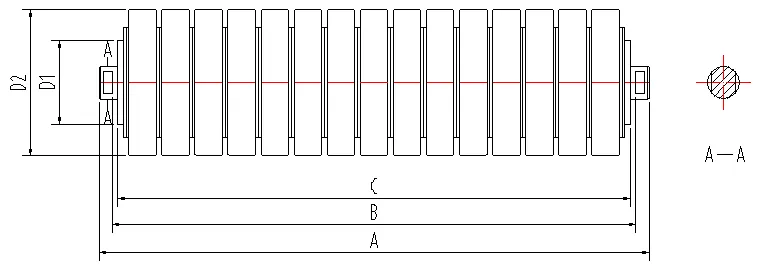 Afrikaans
Afrikaans  Albanian
Albanian  Amharic
Amharic  Arabic
Arabic  Armenian
Armenian  Azerbaijani
Azerbaijani  Basque
Basque  Belarusian
Belarusian  Bengali
Bengali  Bosnian
Bosnian  Bulgarian
Bulgarian  Catalan
Catalan  Cebuano
Cebuano  Corsican
Corsican  Croatian
Croatian  Czech
Czech  Danish
Danish  Dutch
Dutch  English
English  Esperanto
Esperanto  Estonian
Estonian  Finnish
Finnish  French
French  Frisian
Frisian  Galician
Galician  Georgian
Georgian  German
German  Greek
Greek  Gujarati
Gujarati  Haitian Creole
Haitian Creole  hausa
hausa  hawaiian
hawaiian  Hebrew
Hebrew  Hindi
Hindi  Miao
Miao  Hungarian
Hungarian  Icelandic
Icelandic  igbo
igbo  Indonesian
Indonesian  irish
irish  Italian
Italian  Japanese
Japanese  Javanese
Javanese  Kannada
Kannada  kazakh
kazakh  Khmer
Khmer  Rwandese
Rwandese  Korean
Korean  Kurdish
Kurdish  Kyrgyz
Kyrgyz  Lao
Lao  Latin
Latin  Latvian
Latvian  Lithuanian
Lithuanian  Luxembourgish
Luxembourgish  Macedonian
Macedonian  Malgashi
Malgashi  Malay
Malay  Malayalam
Malayalam  Maltese
Maltese  Maori
Maori  Marathi
Marathi  Mongolian
Mongolian  Myanmar
Myanmar  Nepali
Nepali  Norwegian
Norwegian  Norwegian
Norwegian  Occitan
Occitan  Pashto
Pashto  Persian
Persian  Polish
Polish  Portuguese
Portuguese  Punjabi
Punjabi  Romanian
Romanian  Russian
Russian  Samoan
Samoan  Scottish Gaelic
Scottish Gaelic  Serbian
Serbian  Sesotho
Sesotho  Shona
Shona  Sindhi
Sindhi  Sinhala
Sinhala  Slovak
Slovak  Slovenian
Slovenian  Somali
Somali  Spanish
Spanish  Sundanese
Sundanese  Swahili
Swahili  Swedish
Swedish  Tagalog
Tagalog  Tajik
Tajik  Tamil
Tamil  Tatar
Tatar  Telugu
Telugu  Thai
Thai  Turkish
Turkish  Turkmen
Turkmen  Ukrainian
Ukrainian  Urdu
Urdu  Uighur
Uighur  Uzbek
Uzbek  Vietnamese
Vietnamese  Welsh
Welsh  Bantu
Bantu  Yiddish
Yiddish  Yoruba
Yoruba  Zulu
Zulu Feb . 15, 2025 05:31
Back to list
belt conveyor pulley
Conveyor belt pulleys play a critical role in the functioning of conveyor systems across diverse industries. These robust components not only facilitate the movement of materials but also significantly enhance operational efficiency. For businesses leveraging conveyor systems, understanding the nuances of conveyor belt pulleys is key to optimizing system performance. This comprehensive examination delves into the pivotal aspects of conveyor belt pulleys, emphasizing their utility, operational dynamics, and maintenance requirements.
Expertise in understanding the symptoms of pulley-related issues, such as unusual noise, vibration, or belt slippage, can prevent escalated failures. Addressing these symptoms promptly through realignment or part replacement not only preserves pulley function but also ensures continuous system operation. Moreover, technological advancements in condition monitoring tools have revolutionized pulley maintenance. Integrating sensors and IoT devices allows for continuous monitoring of pulley condition, predicting failures before they occur, and thus, reducing unexpected disruptions and maintenance costs. Businesses need authoritative insight when selecting conveyor belt pulleys. Partnering with reputable manufacturers who adhere to international standards and provide comprehensive support is crucial. These partnerships ensure access to high-quality, reliable pulleys and contribute to the consistent performance of conveyor systems, essential for meeting production targets and maintaining competitiveness. The use of high-precision conveyor belt pulleys contributes to the credibility and trustworthiness of a business's operational process. A conveyor system's reliability directly impacts product delivery schedules and overall customer satisfaction. As such, investing in quality pulleys is not merely a technical consideration but a strategic decision influencing the broader business operations. Conveyor belt pulleys are indispensable in achieving streamlined material movement and operational excellence. Their design, selection, and maintenance demand attention to detail and expert knowledge. By prioritizing these elements, businesses can ensure that their conveyor systems operate efficiently, minimizing downtime and maximizing productivity. Ultimately, the strategic integration of well-chosen pulleys into conveyor systems can yield significant improvements in material handling efficiency, bolstering both output and profitability.


Expertise in understanding the symptoms of pulley-related issues, such as unusual noise, vibration, or belt slippage, can prevent escalated failures. Addressing these symptoms promptly through realignment or part replacement not only preserves pulley function but also ensures continuous system operation. Moreover, technological advancements in condition monitoring tools have revolutionized pulley maintenance. Integrating sensors and IoT devices allows for continuous monitoring of pulley condition, predicting failures before they occur, and thus, reducing unexpected disruptions and maintenance costs. Businesses need authoritative insight when selecting conveyor belt pulleys. Partnering with reputable manufacturers who adhere to international standards and provide comprehensive support is crucial. These partnerships ensure access to high-quality, reliable pulleys and contribute to the consistent performance of conveyor systems, essential for meeting production targets and maintaining competitiveness. The use of high-precision conveyor belt pulleys contributes to the credibility and trustworthiness of a business's operational process. A conveyor system's reliability directly impacts product delivery schedules and overall customer satisfaction. As such, investing in quality pulleys is not merely a technical consideration but a strategic decision influencing the broader business operations. Conveyor belt pulleys are indispensable in achieving streamlined material movement and operational excellence. Their design, selection, and maintenance demand attention to detail and expert knowledge. By prioritizing these elements, businesses can ensure that their conveyor systems operate efficiently, minimizing downtime and maximizing productivity. Ultimately, the strategic integration of well-chosen pulleys into conveyor systems can yield significant improvements in material handling efficiency, bolstering both output and profitability.
Next:
Latest news
-
Revolutionizing Conveyor Reliability with Advanced Rubber Lagging PulleysNewsJul.22,2025
-
Powering Precision and Durability with Expert Manufacturers of Conveyor ComponentsNewsJul.22,2025
-
Optimizing Conveyor Systems with Advanced Conveyor AccessoriesNewsJul.22,2025
-
Maximize Conveyor Efficiency with Quality Conveyor Idler PulleysNewsJul.22,2025
-
Future-Proof Your Conveyor System with High-Performance Polyurethane RollerNewsJul.22,2025
-
Driving Efficiency Forward with Quality Idlers and RollersNewsJul.22,2025
OUR PRODUCTS





























